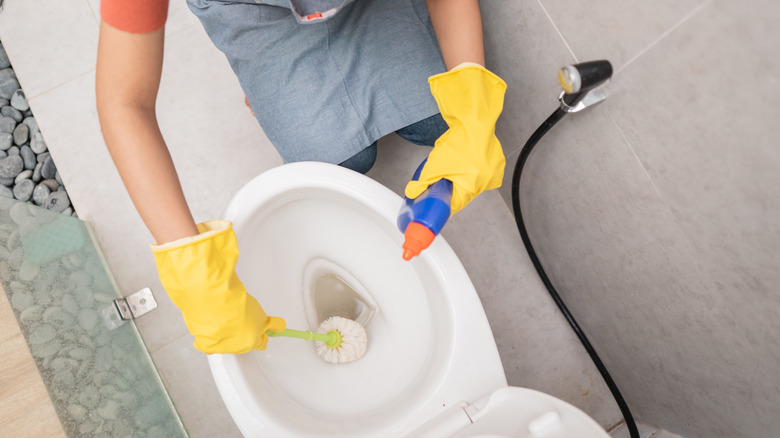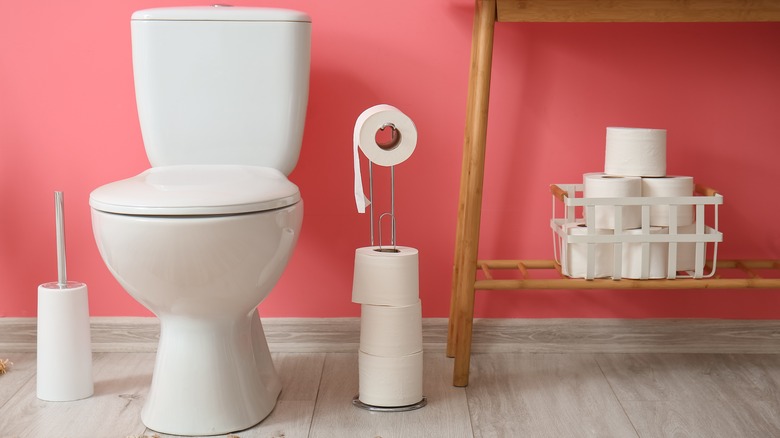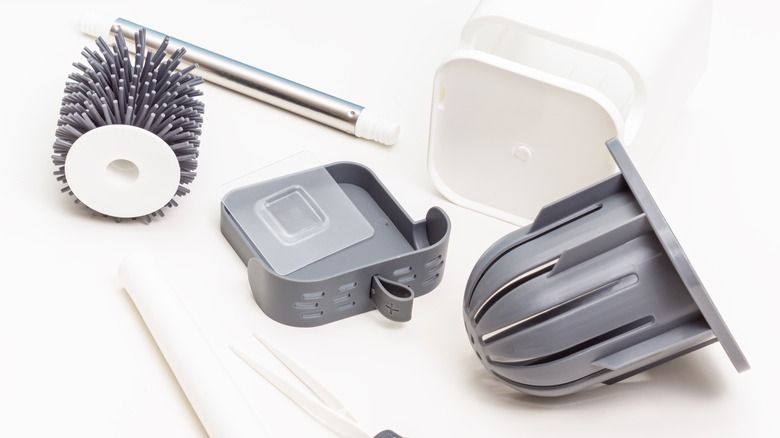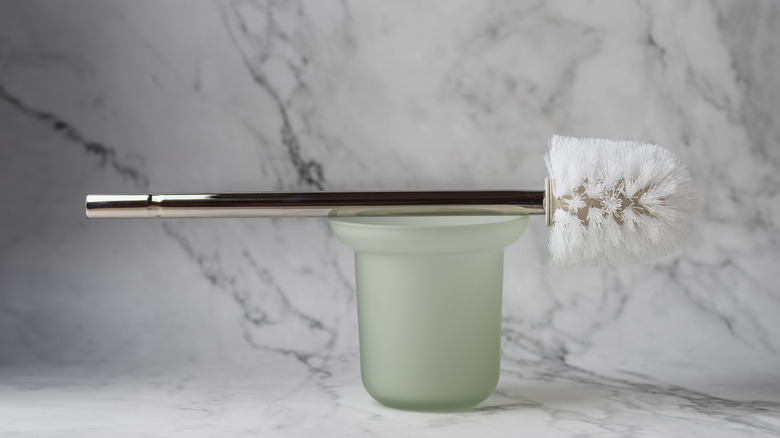How Often Should You Be Cleaning Your Toilet Brush?
Toilet brushes play a very important role in the cleanliness and maintenance of the bathroom as a whole, but they aren't given a lot of thought. They are usually rinsed in the bowl quickly after use and returned to the dirty pool of water in their holder. In order to keep the bathroom clean and sanitary, however, the toilet brush should be cleaned thoroughly and frequently.
Brushes come in various sizes, shapes, and materials. Plastic brushes are the most common, though the most unsanitary, while stainless steel and silicone are more hygienic. Brushes made from wood, bamboo, and other natural fibers are probably the best options for the environment because they are highly sustainable and can be recycled or composted easily, per Home Stratosphere.
This guide will inform you on how often you should be cleaning your toilet brush. It covers how to maintain it, the best cleaning methods, and when it should be replaced.
Best cleaning practices
Toilet brushes are often used to scrub the toilet bowl but then immediately put in their holders where the wet bristles sit in the dirt. However, they should be cleaned and dried after every use. After using the toilet brush, rinse it off with the flush and let it air dry before you put it back in its holder. For full cleaning, the toilet brush and its holder need to be washed weekly. Soak the brush in boiling water and bleach before airing it out to dry (via Drench). The container you use to soak should be able to hold the holder and all parts of the brush.
You can also spray the brush and holder with disinfectant or wipe it down after every use, says The Spruce. If you don't want to use bleach to deep clean, you can use an all-purpose cleaner, although it won't get rid of all the bacteria.
When should you replace your toilet brush?
When did you last replace your toilet brush? Doing so is something most people don't think about, even though it is one of the dirtiest household items.
The material of your brush and its bristles will determine when you should swap it out. Generally, you should be replacing your toilet brush every six months to limit the germs that get spread every time the toilet is scrubbed (via Drench). You should also replace it if the bristles change color, change texture, or start to smell, says The Spruce. Something to note is that when someone in the house has a gastrointestinal illness (e.g. food poisoning, diarrhea), the brush used needs to be replaced because hazardous microbes are now involved (via NBC News).
Brushes with silicone bristles can be used for longer than six months because they don't hold on to bacteria like the plastic ones. The Spruce says silicone brushes can last up to one year. Wood and bamboo brushes can also stay longer than six months, according to Extra Mile.
Tips for toilet brush maintenance
The type of maintenance needed will depend on the material of the toilet brush, from its bristles to its handle. Home Stratosphere discusses the pros and cons of the various materials used to make toilet brushes. Plastic ones are the most popular because they are inexpensive and light. However, they are more likely than others to carry germs in their scratches and cracks and will need more disinfecting. While a stainless steel brush can be more expensive, it is a better option because it lasts longer and won't harbor germs.
Regardless of the material, rinsing after every use and a thorough cleaning regularly is key for proper maintenance of the brush and holder. Today also recommends storing the brush with cleaning solutions in the holder. With some vinegar and essential oils, the toilet brush will stay fresh between uses.
Avoid holders that squeeze the brush bristles because they can cause them to break, and avoid letting dirty water sit in the holders. You can also opt for disposable brushes and avoid using a holder altogether, says The Spruce.



